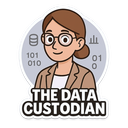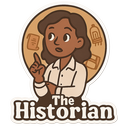data representation and binary
Learn how computers represent data using binary.
Your Learning Journey
Understanding Why Computers Use a Base-2 System
Learning to Represent Numbers with Binary Cards
Practising Number Base Conversion
Learning the Rules for Binary Addition
Decoding and Encoding Text Using a Character Set
Understanding the Standard Units of Data Storage
Module introduction
Have you ever wondered how computers, which are just machines full of tiny electronic switches, can understand and work with photos, music, text, and numbers? How can a simple 'on' or 'off' signal represent every piece of information in the digital world? In this module, we will unlock the secret language of computers: binary. This journey will take you from the basics of why computers use 1s and 0s, to being able to confidently translate numbers and text into this fundamental code, and understand how all digital information, from your favourite game to the messages you send, is built from these simple building blocks.
Why does this module matter?
Understanding binary is like learning the alphabet of the digital universe. It's the lowest level, the most fundamental concept upon which everything else in computing is built. Knowing how data is represented isn't just an abstract skill; it's the key to understanding how computers truly work, how they store and process information, and how they communicate. This knowledge is essential for anyone who wants to create, secure, or manage digital systems effectively.
1
For you
This module will help you develop several key computing personas:

The Data Custodian: This is your core persona for the module. You are learning the first principle of data's lifecycle: how all information, from numbers to text, is represented in its most basic form, binary digits. This is the foundation for understanding how data is stored, managed, and used to create insight.

The Technician: You are connecting the abstract world of data to the tangible, physical world of the computer. Understanding binary helps you appreciate how software instructions are ultimately translated into the on/off electrical signals that the hardware components, like the CPU and memory, actually process.

The Historian: You are exploring one of the most important milestones in the history of computing. The decision to use binary logic, based on the work of pioneers like George Boole, is what made modern digital computers possible. Understanding this helps you appreciate the foundations upon which our entire digital world is built.
2
For your future
The skills you learn in this module are the starting point for many exciting and in-demand careers. One of the most direct pathways is to become a Data Analyst.
Career focus: Data Analysts are like detectives for numbers. They collect, clean, and study large sets of data to find interesting patterns and insights that help businesses make better decisions. They might figure out what products people are buying most, how to make a website easier to use, or even help scientists in their research.
Key Skills: This module is your first step towards building the essential skills for a Data Analyst. You'll learn how all data, from text to numbers, is represented in a way a computer can understand (binary). This is the absolute foundation for how data is stored, processed, and analysed. You will also develop your logical thinking and problem-solving skills as you start to understand how to interpret this data.
Interesting facts: The amount of digital data in the world is growing incredibly fast. It's predicted that by 2025, the total amount of data in the world will be 175 zettabytes. A zettabyte has 21 zeros after it! This explosion of data means that people with the skills to understand and analyse it are becoming more and more important in every field imaginable, from entertainment and gaming to healthcare and protecting the environment.
Our Learning Journey
Our journey into the computer's secret language will begin by exploring why computers rely on a simple on/off system. We'll then get hands-on, using simple but powerful techniques to learn how to count in binary and translate numbers between the denary system we use every day and the binary system computers use. After mastering numbers, we'll discover how character sets like ASCII use these binary codes to represent all the letters, numbers, and symbols you type. Finally, we'll see how these fundamental building blocks allow us to calculate the size of different files, from simple text documents to complex images and sounds.
Last modified: November 12th, 2025





















